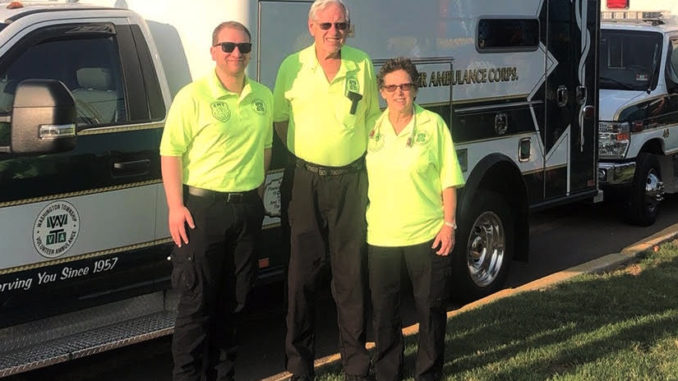
TOWNSHIP OF WASHINGTON—Naomi Theisz, a member of the Washington Township Volunteer Ambulance Corps, is offering to connect residents to a free Emergency Medical Responder course in an effort to increase the number of riders for Washington Township.
Formerly known as First Responder, this course is a 48 hour program designed to teach the student the skills needed to sustain life and prevent further injury until advanced help arrives.
Although EMR personnel do not provide primary care to patients being transported by ambulance they may be asked to assist during the transport of critically injured or ill patients.
This course is also often required by some industries for their safety and response personnel.
The Washington Township Volunteer Ambulance Corps (WTVAC) is a volunteer emergency medical service for the Pascack Valley region that provides free pre-hospital care for those in need. Volunteers work in teams of riders and drivers to ensure that residents of Washington Township and surrounding towns have emergency ambulance coverage at all times.
Theisz has served on the corps for 28 years. Her husband, Nick, has served for eight years. As a licensed and approved instructor from the Emergency Care and Safety Institute, she said that she began offering the EMR course as the need for more certified riders from town arose. She said that the current number of Washington Township residents on the volunteer staff has left them stretched thin.
“We really need people,” she said. “We’re only on duty two or three days a week,” with the Pascack Valley Mutual Aid Group taking up the slack.
The group also includes Westwood, Hillsdale, Emerson, Tri-Boro (Park Ridge, Woodcliff Lake, Montvale), River Vale, and Old Tappan.
An EMR usually does not transport patients to the hospital. EMTs have more advanced skills, are able to administer additional emergency medications, and are trained in the transport, stabilization, and ongoing assessment of patients.
Theisz said there are a few steps to gain access to the EMR training course and become a part of the WTVAC:
- Write her at naomi@theisz.org to express interest in becoming a certified EMR and joining the ambulance corps;
- Visit WTVAC.org, and complete and send in the membership application; and
- Interview with the captain of the WTVAC.
After that, Theisz said she will connect the new member to the EMR training course, which costs $105. She said the member pays for the course up front and that the corps will provide reimbursement upon completion and a year of volunteer service.
The course itself is almost entirely virtual, and includes access to the training modules, supplies, and textbooks. Modules include lessons, assessments, and tests. The course takes 40–60 hours to complete and ends with an in-person component that includes hands-on training for emergency care.
Theisz said that the course can be completed at the trainee’s own pace. Once the course is complete and the applicant passes, they can join a riding crew.
Theisz said that there are a few things an EMR cannot do that an EMT can do: Where EMRs are trained in emergency medical care, there are certain forms of care that only EMTs are trained to provide. She said EMRs cannot serve as crew chiefs.
Theisz said that being a member of the ambulance corps is “an obligation not to be taken lightly.” She said that although members must volunteer for at least a weekly six-hour shift, those shifts might not necessarily require a member to ride or drive for the entire shift.
Each member is issued a radio alert pager that they turn on each shift to know when there is an emergency.
“When I joined the corps 28 years ago, I would ride 12-hour shifts, from 7 to 7 every Thursday,” she said.
She said that dedication is also important for her because she has noticed that people have found
less time to commit during her time with the WTVAC. She said that dedication is “being present in town and in the moment, ready to spring into action” when the radio pager sounds; it is putting aside whatever it is you are currently doing and focusing on the situation “because a person’s life can depend on how quickly you act.”
Indeed, she said, the sooner a crew assembles at the WTVAC headquarters—now at 354 Hudson Ave., but soon in a state-of-the-art facility at the under-construction emergency services building at 656 Washington Ave.—the sooner they can drive out.
Theisz said she decided to join the corps after a friend who had volunteered in an ambulance corps in Rockland County relayed positive experiences.
When Nick Theisz retired eight years ago, after 40 years of working as an eye doctor, he became the driver for her crew. She said that she trusts having him as her partner on the road as well as in life.
“When I’m on a call helping people, I feel good about it,” Naomi Theisz said.
She explained, “Looking the patient in the eyes, talking them through what I’m about to do, bandaging their wounds, giving them medication, and calming them down to ease their anxiety and any worries they have about the hospital. I see that calm look on their face as I help them. That’s what it’s all about.”
